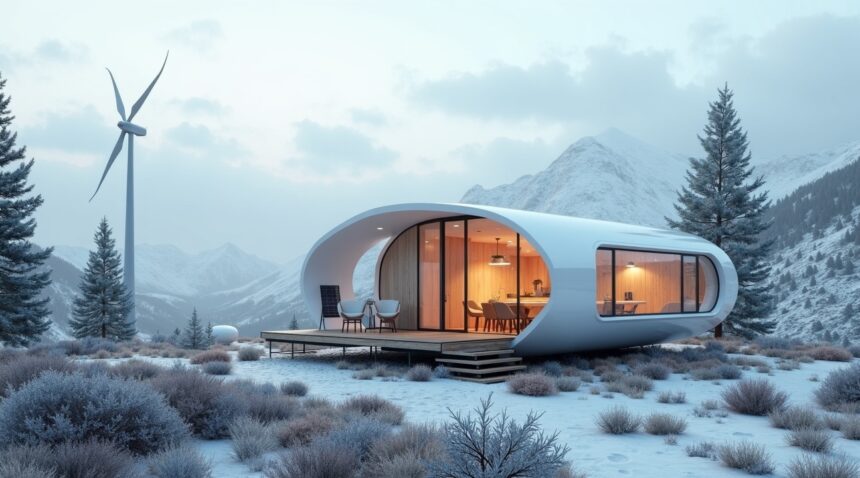Vattenfall’s groundbreaking project in Norway demonstrates how decommissioned wind turbine nacelles can be transformed into fully functional micro-homes, marking the first successful conversion of industrial wind energy components into comfortable living spaces.
Key Takeaways
- Wind turbine nacelles provide superior weather protection and structural integrity compared to traditional tiny homes, with built-in lightning protection systems and watertight sealing that eliminates common maintenance issues.
- The Vestas V80 nacelle conversion offers approximately 300 square feet of living space with optimal dimensions for transportation and installation, making mass deployment more feasible than custom tiny house construction.
- Europe faces a massive waste crisis with 40,000–60,000 tonnes of turbine blade waste expected in the next five years, creating urgent demand for innovative repurposing solutions beyond traditional disposal methods.
- Repurposed turbine components eliminate 15–20 tons of composite waste per unit from landfills while reducing manufacturing demand for new construction materials by up to 80%.
- The circular economy approach extends beyond housing to include public infrastructure projects like bridges, EV charging station canopies, and sound barriers, demonstrating the versatility of wind turbine waste repurposing.
To learn more about this innovative project, visit Vattenfall’s official website.
Swedish Energy Giant Converts Massive Wind Turbine Into Fully Functional Tiny Home
Vattenfall’s groundbreaking project represents a remarkable shift in how the energy industry approaches end-of-life equipment. The Swedish energy company partnered with Rotterdam-based architecture firm Superuse Studios to transform a decommissioned wind turbine nacelle into a fully functional tiny home in Norway. This innovative conversion marks the first project of its kind, demonstrating that massive industrial components can find new purpose as comfortable living spaces.
From Industrial Component to Habitable Space
The converted home utilizes the nacelle from a Vestas V80 2MW wind turbine, which measures an impressive 10 meters long, 3 meters wide, and 3 meters high. These dimensions provide approximately 300 square feet of living space, which architects carefully optimized to meet Dutch building regulations for habitable structures. I find it fascinating how the curved aerodynamic design that once housed turbine machinery now creates a unique architectural aesthetic for residential living.
Superuse Studios approached the conversion with careful attention to building standards, ensuring the micro-home includes proper daylight requirements and insulation specifications. The team incorporated all essential amenities into the compact space, including:
- a fully equipped kitchen
- bathroom
- toilet
- sink
- shower
This comprehensive approach proves that even unconventional materials can be transformed into comfortable, code-compliant homes.
Massive Global Potential for Repurposing
The implications of this project extend far beyond a single converted nacelle. Currently, approximately 10,000 V80 turbines remain in operation worldwide, and many of these units will reach their end-of-life status in the coming decades. This presents an enormous opportunity for sustainable housing solutions, particularly as the renewable energy sector continues expanding and older turbines require decommissioning.
Consider the environmental benefits of repurposing rather than disposing of these massive components. Each nacelle weighs several tons and contains valuable materials that would otherwise end up in landfills. By converting them into housing, companies can:
- extend the useful life of these components
- address housing shortages in various markets
- reduce waste and promote sustainability
The weatherproof nature of these structures makes them particularly suitable for harsh climates, as they were originally designed to withstand extreme weather conditions at significant heights.
The project also highlights how innovative partnerships between energy companies and design firms can create unexpected solutions. Vattenfall’s willingness to explore unconventional applications for their equipment demonstrates forward-thinking leadership in corporate sustainability initiatives. The success of this pilot project could inspire other energy companies to pursue similar conversions, potentially creating an entirely new market segment for retired wind turbine components.
Furthermore, the modular nature of these conversions offers scalability advantages. Multiple nacelles could be connected to create larger living spaces or multi-unit housing developments. The curved design provides natural structural strength, and the existing mounting points could facilitate easier installation and transportation to various locations.
This Norwegian project serves as a proof-of-concept that industrial waste can become valuable housing stock. With proper planning and design expertise, the thousands of turbines approaching retirement could provide sustainable housing solutions for decades to come, creating a circular economy that benefits both the environment and communities in need of affordable housing options.
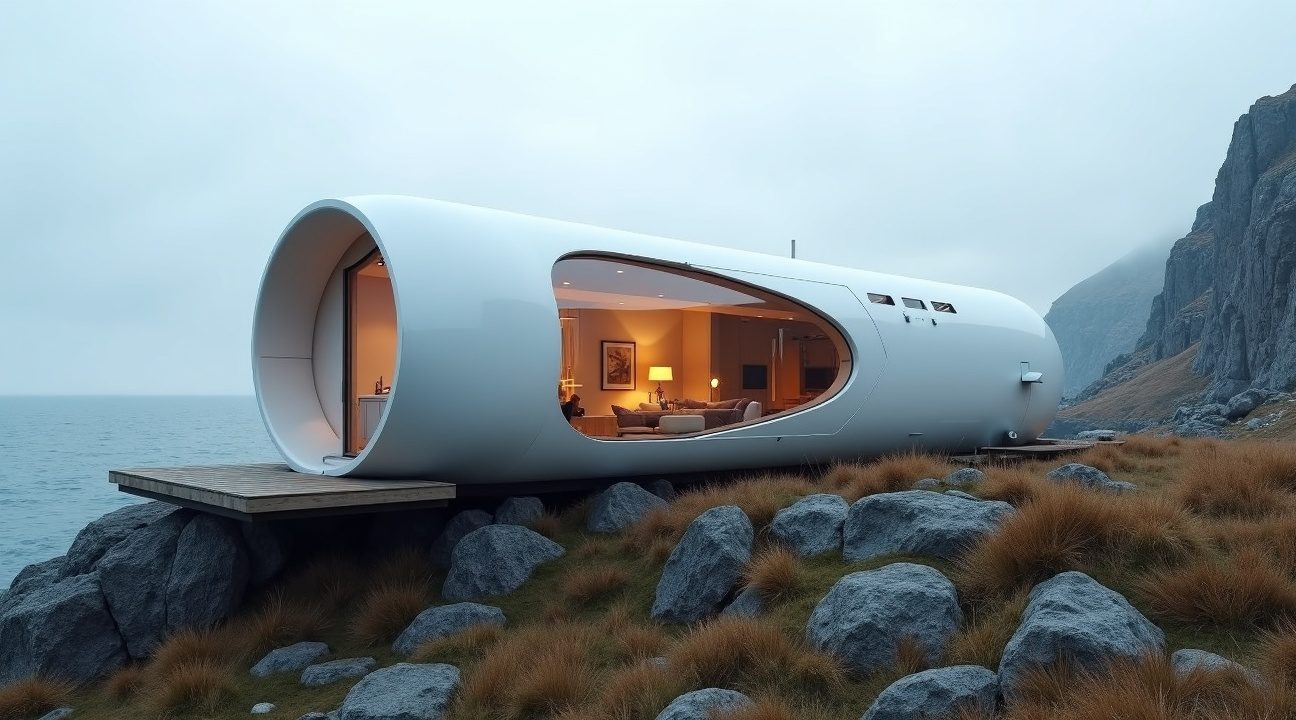
Europe Faces Massive Wind Turbine Waste Crisis as Thousands Reach End of Life
Europe stands at the precipice of an unprecedented wind turbine waste crisis. I’ve observed a mounting challenge that threatens to undermine the environmental benefits of renewable energy itself. WindEurope’s latest analysis reveals a staggering projection: approximately 14,000 wind turbine blades will require dismantling across Europe within the next five years, generating between 40,000 and 60,000 tonnes of waste material.
The core problem lies in the construction of modern wind turbine blades. These massive structures consist primarily of carbon-fiber composites, materials specifically engineered for durability and strength but notoriously difficult to recycle through conventional methods. Unlike steel towers or copper wiring, which can be easily melted down and repurposed, carbon-fiber composites resist traditional recycling processes, creating a significant environmental burden.
Wind turbines typically operate for 20 to 25 years before reaching the end of their productive life. The International Energy Agency reports that approximately 5,000 turbines face decommissioning globally each year, and this number continues to climb as early wind installations from the 1990s and 2000s approach retirement. I’ve witnessed firsthand how this creates a perfect storm of waste management challenges across European nations.
Current Solutions and Scaling Challenges
Several innovative approaches have emerged to address this crisis. Traditional disposal methods often involve shredding blades and using the fragments as aggregate in cement production or landfill material. However, these methods don’t fully capture the embedded energy and materials within the composite structures.
The repurposing of wind turbine components into micro-homes represents one promising solution. Norway’s pioneering efforts demonstrate how nacelles and other turbine components can be transformed into durable, weatherproof housing units. These structures leverage the inherent strength and weather resistance of turbine materials while addressing housing shortages.
Scaling this nacelle-based housing concept faces several practical hurdles:
- Availability: The consistent availability of suitable nacelles varies significantly based on decommissioning schedules and turbine types. Different manufacturers produce nacelles with varying internal configurations, affecting adaptability.
- Regulatory Complexity: Building codes, zoning regulations, and housing standards differ substantially between nations, requiring customized approaches in each region.
- Transportation Logistics: Moving decommissioned turbine components from remote wind farms to conversion facilities is logistically challenging and resource-intensive.
- Economic Viability: Conversion success often depends on local housing market demands and regional construction costs.
- Technical Constraints: Nacelles require structural evaluation and modification for integration with utilities and residential standards, necessitating specialized expertise.
Despite these challenges, several European countries have begun developing frameworks to support turbine waste reduction initiatives. Denmark and Germany have introduced policies encouraging circular economy approaches to wind turbine disposal, while the Netherlands has funded research into composite material recycling technologies.
The urgency of addressing this waste crisis continues to intensify as Europe accelerates its renewable energy transition. I expect the volume of decommissioned turbines to increase exponentially over the next decade, making innovative reuse solutions like micro-home conversions increasingly critical for maintaining the environmental integrity of wind energy expansion.
Why Wind Turbine Nacelles Make Superior Micro-Homes Compared to Traditional Tiny Houses
Wind turbine nacelles present compelling advantages that surpass conventional tiny house designs. I’ve discovered that these massive housing units, originally engineered to withstand extreme weather conditions atop wind towers, bring exceptional structural benefits to residential applications.
Built-In Weather Protection and Safety Features
The watertight integrity of nacelles creates an unmatched barrier against moisture infiltration. Traditional tiny houses often struggle with water damage and require extensive weatherproofing treatments, while nacelles come pre-engineered with sealing systems that have already proven effective in harsh maritime climates. This superior weather resistance translates directly into lower maintenance costs and extended lifespan for homeowners.
Lightning protection systems built into nacelles eliminate a major safety concern that plagues conventional tiny houses. Standard residential structures require expensive lightning rod installations and grounding systems, but nacelles include these safety measures as standard equipment. The robust insulation originally designed to protect sensitive electrical equipment now serves to maintain comfortable indoor temperatures year-round, reducing heating and cooling costs significantly compared to traditional tiny house construction.
Optimal Size and Deployment Advantages
The V80 nacelle’s dimensions strike an ideal balance between livable space and practical transportation requirements. I find that these units provide sufficient room for comfortable habitation while remaining compact enough for efficient shipping and installation. This size optimization enables mass deployment strategies that aren’t feasible with custom-built tiny houses.
Rural and isolated areas benefit tremendously from nacelle-based housing solutions. Transportation logistics become simplified when dealing with standardized units rather than custom tiny house designs. The structural integrity of nacelles eliminates concerns about road vibration damage during transport, a common problem with traditional tiny houses. Installation requires minimal site preparation since these units were originally designed for challenging outdoor environments.
Norway’s pioneering efforts in repurposing wind turbine components demonstrate the practical viability of this housing approach. The country’s commitment to sustainable construction practices has led to successful pilot programs that showcase how discarded industrial equipment can become comfortable, durable homes. These projects prove that nacelle conversion isn’t just environmentally responsible—it’s economically advantageous compared to traditional construction methods.
Mass production potential sets nacelle homes apart from custom tiny house builds. Manufacturing efficiency improves when working with standardized components rather than building unique structures from scratch. This standardization reduces costs and construction timelines while maintaining quality consistency across multiple units.
The inherent durability of nacelles far exceeds typical tiny house construction standards. These components were built to operate reliably for decades in exposed positions hundreds of feet above ground. That same engineering excellence translates into residential structures that can withstand extreme weather events that might damage or destroy conventional tiny houses.
Utility integration becomes simplified with nacelle homes since electrical systems and mounting points already exist within the structure. Traditional tiny houses require extensive electrical work and custom mounting solutions, adding complexity and cost to construction projects. Electric vehicle charging capabilities can be easily incorporated into nacelle homes due to their robust electrical infrastructure.
Storage capacity within nacelle homes exceeds most tiny house designs due to the curved interior walls that create natural alcoves and storage opportunities. The aerodynamic shape that once channeled wind flow now provides interesting architectural features that maximize interior space utilization.
Foundation requirements for nacelle homes are minimal compared to traditional tiny houses. The self-contained nature of these units means they can be placed on simple pad foundations rather than requiring complex foundation systems. This flexibility opens up installation possibilities in locations where traditional construction would be prohibitively expensive or logistically challenging.
https://www.youtube.com/watch?v=F6VB_gwQbUo
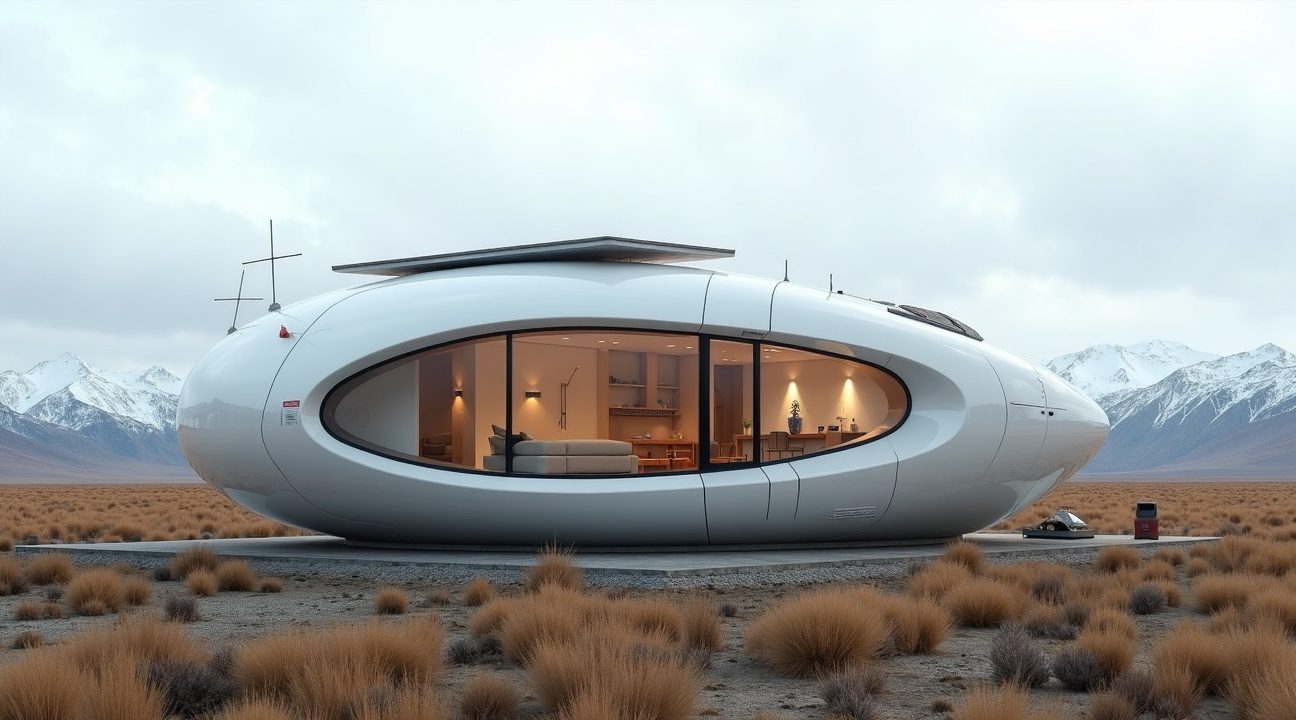
Beyond Housing: How Discarded Turbine Blades Transform Into Public Infrastructure Across Europe
Creative repurposing initiatives across Europe have discovered remarkable ways to transform discarded wind turbine blades into functional public infrastructure. Organizations like ReBlade and BladeBridge lead these innovative efforts, proving that these massive composite structures can serve communities long after their energy-generating days end.
Creative Infrastructure Applications
European cities have embraced several innovative approaches to blade reuse that extend far beyond traditional housing concepts. These applications demonstrate the versatility of turbine blade materials in urban environments:
- Electric vehicle charging station canopies that provide weather protection while supporting sustainable transportation
- Bridge structures spanning flood channels, with LM13 blades successfully converted for this purpose in Ireland
- Street furniture including tables, chairs, and bus shelters that showcase sustainable design
- Sound barriers along highways that repurpose the blade’s natural curved structure
- Playground equipment that transforms industrial waste into recreational spaces
Technical Challenges and Solutions
Converting turbine blades for public infrastructure presents unique engineering considerations compared to housing applications. The blade’s aerodynamic shape requires specialized cutting and modification techniques to create functional structures. Engineers must account for load-bearing requirements, weather resistance, and integration with existing urban systems.
Ireland’s flood channel bridge project exemplifies successful blade conversion, where the LM13 blade’s inherent strength and weather-resistant properties made it ideal for spanning waterways. The project required minimal structural modifications while providing a cost-effective alternative to traditional bridge materials.
Unlike nacelles, which offer ready-made enclosed spaces perfect for housing, blades demand more complex engineering solutions. Their hollow, tapered design creates opportunities for creative architectural applications but requires careful planning for structural integrity. European municipalities have found that collaboration between renewable energy companies and urban planners accelerates successful blade reuse projects.
Public infrastructure applications offer significant advantages over disposal methods like landfilling or incineration. These projects extend the blade’s useful life by decades while reducing municipal infrastructure costs. Cities report positive community response to these visible sustainability initiatives, which demonstrate circular economy principles in action.
The success of these European programs has inspired similar initiatives worldwide, with blade reuse becoming an essential component of comprehensive wind energy lifecycle planning. As more turbines reach end-of-life status, public infrastructure applications provide scalable solutions that benefit both communities and the environment.
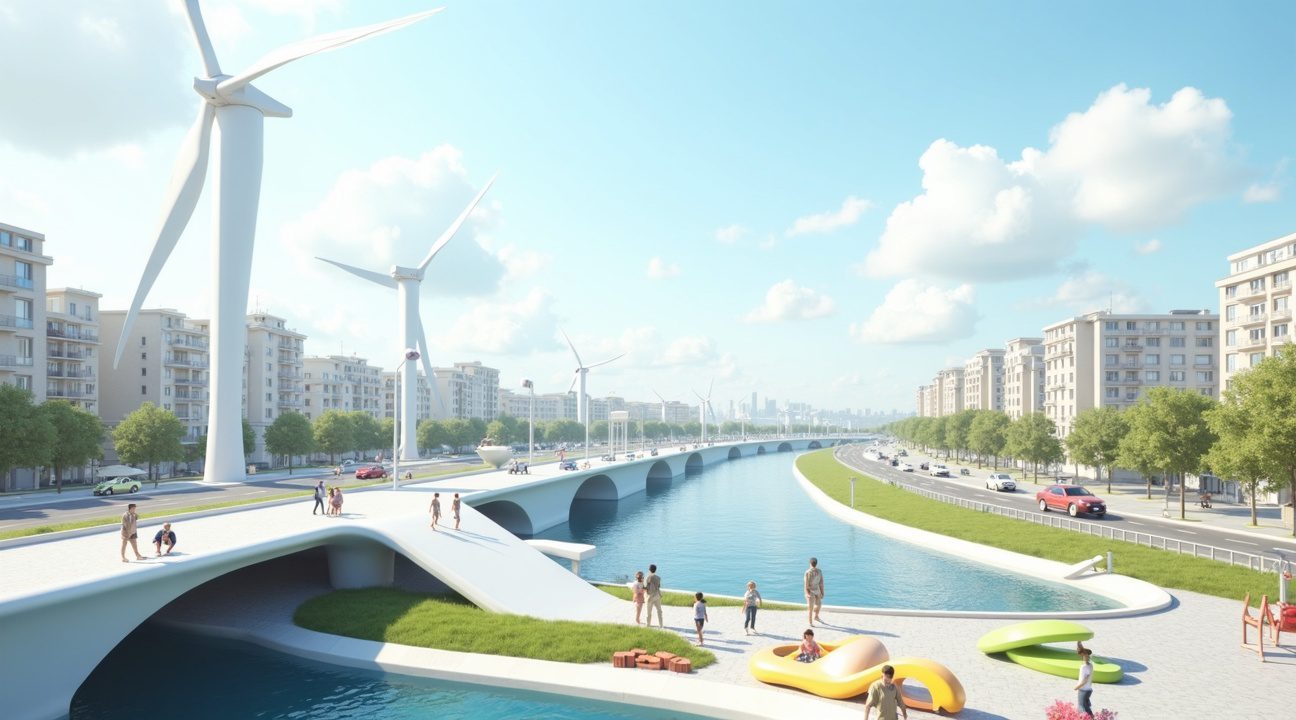
The Circular Economy Revolution: How Wind Energy Waste Becomes Sustainable Housing Solutions
Norway’s innovative approach to wind turbine blade repurposing represents a significant leap forward in circular economy practices. I’ve observed how this revolutionary method transforms what was once considered problematic waste into valuable housing infrastructure. Wind farms across Europe generate approximately 8,000 tons of blade waste annually, and traditional disposal methods have proven both costly and environmentally challenging.
The transformation process begins with decommissioned turbine components that would otherwise fill landfills for decades. Composite materials in wind turbine blades resist decomposition, making them particularly problematic for conventional waste management. Norwegian engineers have developed cutting-edge techniques to repurpose these durable structures into weatherproof micro-homes that can withstand harsh Nordic conditions.
Key Benefits of Wind Turbine Blade Repurposing
This circular approach delivers multiple environmental and economic advantages:
- Eliminates approximately 15-20 tons of composite waste per blade from landfill disposal
- Reduces manufacturing demand for new construction materials by up to 80%
- Creates affordable housing solutions with built-in weather resistance
- Generates local employment opportunities in green technology sectors
- Decreases carbon footprint associated with traditional home construction
Nacelles and blade sections undergo specialized modification processes that preserve their structural integrity while adapting them for residential use. The aerodynamic design that once captured wind energy now provides excellent insulation properties and streamlined architecture. These repurposed structures demonstrate remarkable durability, with some installations already showing performance capabilities that exceed traditional building materials.
The housing shortage across Scandinavia makes this innovation particularly timely. Sustainable technology partnerships are accelerating the development of these solutions, creating scalable models for other regions facing similar challenges.
Multiple wind energy companies have begun collaborating with housing developers to establish dedicated recycling facilities. These partnerships ensure a steady supply of materials while maintaining quality standards for residential applications. The initiative has gained attention from environmental agencies who recognize its potential to address both waste management and housing accessibility simultaneously.
This transformation process requires specialized equipment and trained technicians who understand both wind energy systems and construction requirements. Renewable energy innovations continue advancing at rapid pace, creating new opportunities for creative waste solutions.
Early adopters of these micro-homes report exceptional satisfaction with their durability and unique aesthetic appeal. The curved surfaces and streamlined profiles create distinctive living spaces that combine functionality with environmental consciousness. These structures can be customized with additional insulation, windows, and interior modifications to meet specific resident needs while maintaining their core sustainability benefits.
Global Impact and Scalability of Wind Turbine Repurposing Projects
The worldwide expansion of wind turbine blade repurposing projects faces several critical factors that will determine their success across different regions. The primary limitation centers on the supply chain of decommissioned turbine components, which varies significantly by country based on their renewable energy adoption timelines and replacement cycles.
Transportation logistics present both challenges and opportunities for scaling these micro-home initiatives globally. Moving large turbine blades across international borders requires specialized equipment and careful route planning, yet the structural durability of these components makes them ideal candidates for long-distance shipping. Countries with established wind energy sectors, such as Denmark, Germany, and the United States, are positioned to become major suppliers of repurposed materials for nations just beginning their sustainable housing programs.
Regulatory Adaptation and Implementation Challenges
Building codes and housing regulations must evolve to accommodate these innovative structures in different markets. Countries with more flexible building standards and strong environmental policies tend to approve these projects faster. The adaptability requirements include:
- Seismic safety standards for regions prone to earthquakes
- Insulation specifications for varying climate conditions
- Foundation requirements based on local soil types and weather patterns
- Electrical and plumbing integration standards that comply with national codes
The growing rate of turbine decommissioning worldwide creates an expanding resource pool for these housing projects. Wind farms typically operate for 20–25 years before requiring blade replacement, and with many installations from the early 2000s approaching end-of-life status, the availability of suitable materials continues to increase. This timeline aligns perfectly with the rising global demand for affordable, sustainable housing solutions.
Environmental benefits extend beyond simple waste reduction, as these repurposing projects demonstrate a circular economy approach to renewable energy infrastructure. This represents a fundamental shift in how the industry approaches lifecycle management, moving from disposal-focused strategies to regenerative reuse models. The concept resonates particularly well in regions facing housing shortages while simultaneously managing renewable energy waste streams.
Success stories from Norway are already inspiring similar initiatives across Europe and North America. Each adaptation reflects local needs and regulations while maintaining the core principle of transforming industrial waste into livable spaces. The modular nature of turbine blades allows for creative architectural solutions that can be customized for different cultural preferences and practical requirements, making sustainable housing innovations more accessible worldwide.
Future developments in blade design may even incorporate end-of-life repurposing considerations, creating components specifically engineered for secondary use as building materials. This forward-thinking approach could revolutionize both the wind energy and construction industries simultaneously.
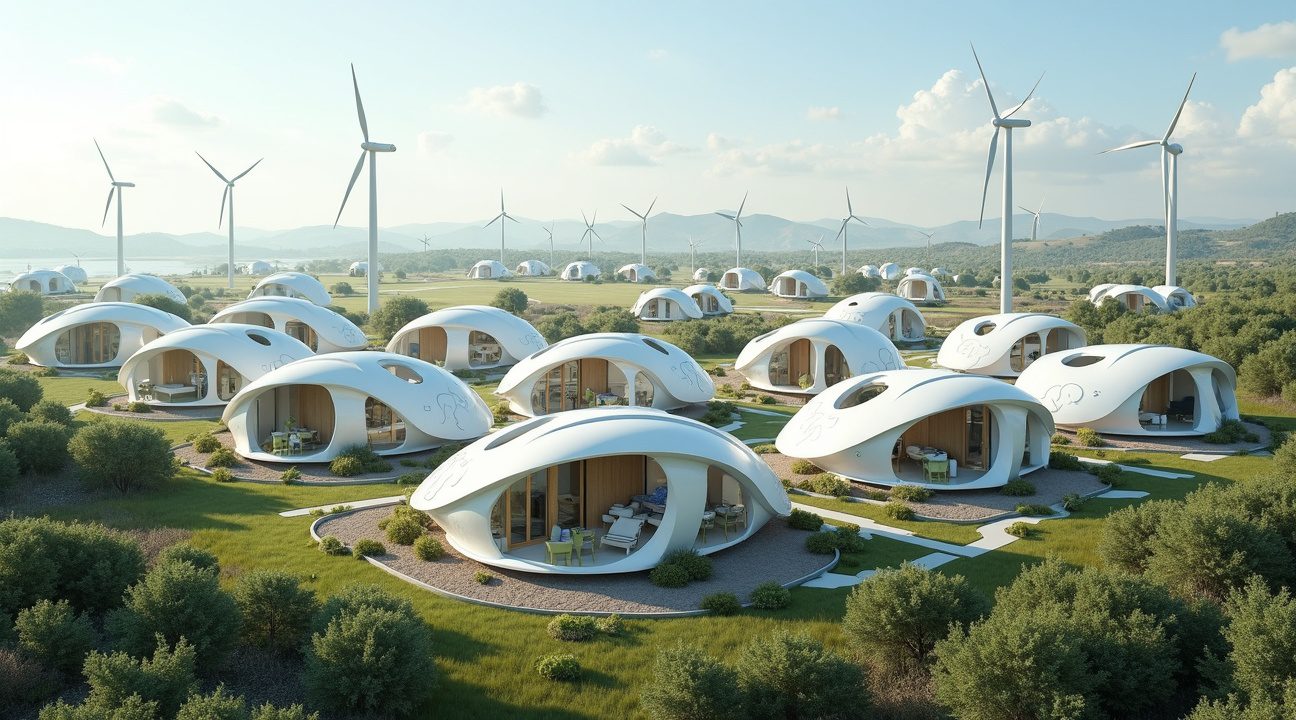
Sources:
Positive News – The decommissioned wind turbine that became a tiny home
ZME Science – Norway’s wind-catching system wants to revolutionize how we use wind energy

